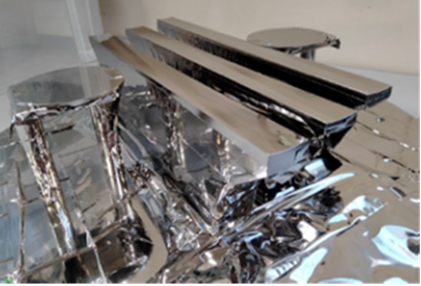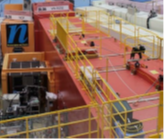Neutron Optics
Professor
- HINO, Masahiro e-mail: e-mail:hino.masahiro.2x<atmark>kyoto-u.ac.jp
Assistant Professors
- NAKAMURA, Hidehito e-mail: e-mail:nakamura.hidehito.3x<atmark>kyoto-u.ac.jp
- HIGUCHI, Takashi e-mail:higuchi.takashi.8k<atmark>kyoto-u.ac.jp
* replace with @
Our group focuses on the optical properties exhibited by neutrons in low energies, and explores new findings and applications of slow neutrons. The neutron is a spin ½ particle sensitive to magnetic fields, and posses a lifetime of about 15 minutes. It is sensitive to all four fundamental interactions of nature Slow neutrons are very powerful tool in various research fields, such as material and life sciences, particle physics, and fundamental engineering. Being electrically neurtral, neutrons can hardly be bent by electromagnetic fields. In order to transport as many optimal neutron beams as possible from the neutron source to the experimental equipment, we deveop advanced neutron optical equipment, in particular high-performance neutron multilayer mirrors as shown in Fig.1. Kyoto University and the High Energy Accelerator Research Organization (KEK) have jointly installed neutron resonance spin echo spectrometers at BL06 at J-PARC MLF (Fig.2). We named the spectrometers “VIN ROSE” (VIllage of Neutron ResOnance Spin Echo spectrometers), which has spawned a new class of spectroscopic methods to investigate slow dynamics of nanostructures in various materials. Additionaly, leveraging the stong penetrating ability of neutrons, we are exploring the new field of neutron imaging with advanced neutron optics and phase control. We are also developing various luminescent plastics reactive to ultraviolet rays and radiation for promoting the development of inexpensive and sensitive radiation detectors.
Furethermore, we also conduct researches with international collaborations, inculding a project at TRIUMF, Canada using ultracold neutrons that can be stored in material vessels, and project at CERN, Switzerland aiming to unveil the fundamental interactions of the antineutron, the antiparticle of the neurton. Through these efforts, we expand the application of our neutron optical technologies developed in Kumatori to various fields, including particle physics experiments aimed at testing fundamental symmetries in the laws of physics.We are working to apply this knowledge and technologies towards the realization of a new research reactor planned to be builtat the “Monju” site in Tsuruga city, Fukui Prefecture.
 |  |
|
Fig.1 Photographs of the ellipsoidal focusing neutron supermirrors. |
Fig.2 Photographs of the VIN ROSE at BL06 at J-PARC MLF. |




